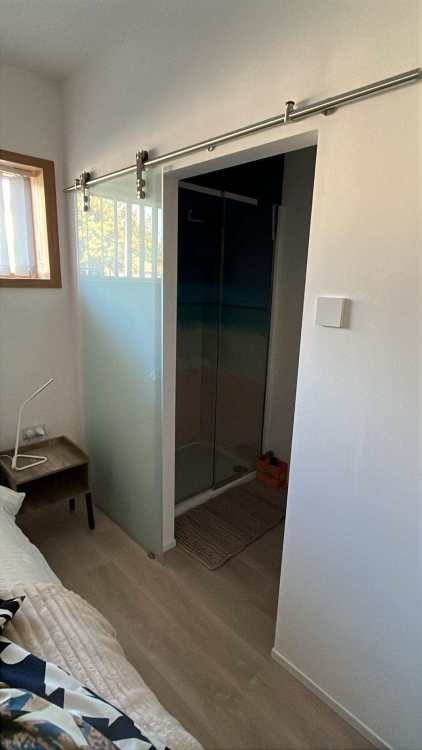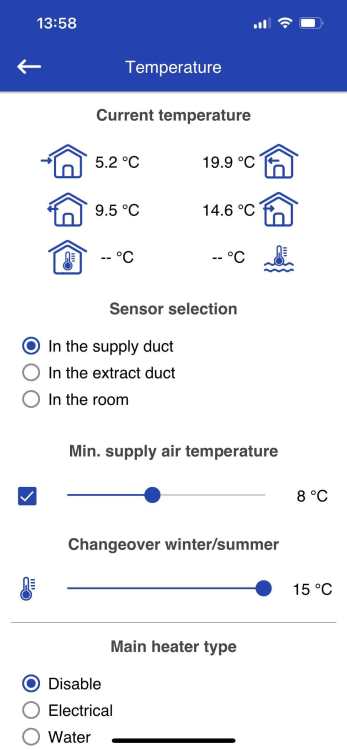-
Posts
261 -
Joined
-
Last visited
-
Days Won
6
Simon R last won the day on May 6 2021
Simon R had the most liked content!
Personal Information
-
About Me
Retired form the computer industry. Like getting involved in projects, between my wife and I we have restored cars, built a boat, a done limited house renovation, new electrics, central heating and plumbing.
-
Location
Lee on Solent - Hampshire
Recent Profile Visitors
The recent visitors block is disabled and is not being shown to other users.
Simon R's Achievements

Regular Member (4/5)
275
Reputation
-
Yes, very frustrating, I've got 60m2 and that's it. Why they discontinue what is a run of the mill product is beyond me
-
Hi, our floor is doing well, no signs of fade even in areas exposed to lots of sun. The floor is laid tight to room edges with no expansion gap just a grid of tackifier to stop it moving . We bought it from Quadrant a commercial floor company and it's functionally equivalent to Amtico Access. I still have a good quantity of the flooring in the stuff for sale on BuildHub.
-
Seeking Advice on Strengthening a Pocket Door Wall (Eclisse System)
Simon R replied to finito's topic in Doors & Door Frames
An alternative you might consider using a glass sliding door surface mounted. It makes finishing a bit easier than a pocket and is much more robust . -
Insightful piece on more or less today.
Simon R replied to MikeSharp01's topic in Environmental Building Politics
Very true, but if you use as little as we do it's fine. Even at the higher rate of 22.6 it's broadly compatible with electricity cost and is more a convenient way of providing hot water.The average standing charge for gas is in the region of 30p per day so much more than the amount I'm billed for my gas usage. -
Insightful piece on more or less today.
Simon R replied to MikeSharp01's topic in Environmental Building Politics
OK, yes, A2A is a heat pump, it just differentiates it from the air to water kind. For hot water it's a gas combi boiler. Last year our gas consumption was 120 units so in the region of 1,320 kWh for showers baths and a little washing up. Fortunately Utilita have a tariff with no standing charge. -
Insightful piece on more or less today.
Simon R replied to MikeSharp01's topic in Environmental Building Politics
No heat pump but we do have a 2.5kWh A2A unit for heating and cooling. We run the house at 22C all year. -
Insightful piece on more or less today.
Simon R replied to MikeSharp01's topic in Environmental Building Politics
Yes, but given the time its going to take to upgrade the grid and do all the other work required for storage it's still worth 'acting local, thinking global' if you can afford it. With an 9.2kWh battery and 3.6kW inverter installation net consumption from the grid is just a megawatt since 10/2022 when the system was installed. Exports to the grid help reduce the need for gas generation....yes, piddling amounts but it helps. It's not all good as my solar will be exporting at times when other cheaper solar sources are available and I'll be drawing from the grid on cloudy days. Generation pricing is currently wrong and needs to be fixed basing it on gas pricing with the current generation mix is just wrong. -
Agree complete, using Bose cube or Cambridge Minx for the satellite speakers also means you can get them out of the way by wall mounting them. They're readily available second hand and give excellent sound.
-
So...I'm about to do Rainwater Harvesting
Simon R replied to mike2016's topic in Rainwater, Guttering & SuDS
Our tank was is 4600ltrs. Just the two of us and a small garden. Lots of washing though as we’re both sporty. -
So...I'm about to do Rainwater Harvesting
Simon R replied to mike2016's topic in Rainwater, Guttering & SuDS
The Kingspan system has a display showing tank level and options to customise auto fill from mains water. As I mentioned the pump had failed before first use and Kingspan wanted silly money just to send someone out. Our system now is very simple. A Divertron pump which switches on when it senses a pressure change in the system ie switching on a tap. No header tank. I also bought a cheap radio tank sensor which displays tank depth. In practice it’s pretty irrelevant and the tank has never run dry. -
So...I'm about to do Rainwater Harvesting
Simon R replied to mike2016's topic in Rainwater, Guttering & SuDS
Our rain water is still clear after 3 years use and is used for washing machine , toilets, window cleaning and garden watering. RWH was not on our original build plan, but a 19K quote to connect to surface water drainage made it a sensible option. After minimal research a Kingspan Klagster 4,600ltr system was purchased. The system included pump and controls for monitoring and maintaining the system. It got delivered and installed early in the build cycle, when we came to use it for the first time two years later the pump had failed. The Kingspan guarantee was 1 year from delivery and they wanted £300 just to look at the pump. Not impressed. To cut a long story short a call to Anglian pumps and some very good customer service the pump was replace with a Divertron pump. The pump is stainless steel and has a float intake, so it's always taking from the top surface of the the water. The pump also auto senses when an outlet is opened. Having ditched the complex Kingspan control system it's been running for three years without problem. I think having a good leaf filter and float intake are key factors in keeping the water clear. We're also fortunate that we don't get much debris in our gutters so silt build up is not a problem. Being able to clean our windows with a pole has been and unexpected bonus, not something you can do with tap water. With the benefit of hindsight I'd have bought a good tank with leaf filter and a decent pump, keep it simple, forget the fancy control system. -
First timers attempting an ICF and Oak Frame house in Devon
Simon R replied to MCoops's topic in Introduce Yourself
It looks as though you've found a lovely plot, good luck with your build Along with a couple of the other comments, building an oak frame within and ICF structure will add considerable cost and complexity. Like you my wife and I had some renovation experience, doing a build was a steep learning curve. With a lot of help from the folks on build hub we ended up building with ICF. It's worked out well for us, we used JUB ICF which is a little different from most ICF solutions as they cut all the blocks in the factory. A little more expensive but it reduces risk, for example all window opening are millimetre perfect. ICF isn't lego, construction is pretty straight forward, filling the walls with concrete is not and definitely requires an experienced contractor. We blogged our build on build hub and also added a thead on the ICF system we used. -
It looks as though the efficiency of my MVHR is diminishing and I've not a clue why so I thought where better to get some input than BuildHub. I'm running a Blauberg SB 550 unit which is possibly a little oversized for our build. When commissioned the air flow temperatures suggested I was getting pretty much 94%, today, three years later it looks as though its running at about 80%. The filters are clear(newly fitted), the heat exchanger core and internals of the unit and clean and indeed look like new. When commissioned the air entering the house was less than 3.3C colder than the air leaving the house. Now it's pretty much 5.3C cooler. That's a big enough difference to notice as a draft. The figures looks like it has to be the heat exchange unit unless I'm getting a lot more air into the house than is leaving it through the MVHR. Our build ACH of 0.6 was, testing the flows should let me know if this has changed. I've contacted Blauberg who made some suggestions about possible causes. Imbalanced flows, dirty filters, dirty heat exchanger etc. I also asked them if they monitored and kept efficiency data for the long term operation of their units, they don't (or won't share it?). I've added myself to the anemometer wait list so I can check flows and compare them to those at the time of commissioning, however as no settings have been changed I'd be surprised if it's a factor. There must be a good number of BuildHub members who have long term data of the efficiency of their MVHR systems heat exchangers. I'd like to know if others have seen a drop off and indeed if they haven't. Here is a copy of the heat exchanger washing instructions:Cleaning Poly brochure_EN.pdf
-
It depends on your budget and how much use they'll get. The main advantage for me was the lack of joints. Reco surfaces have an option to print your photo which gives pretty limitless options and it's not expensive. Here is a thread you may find useful:






